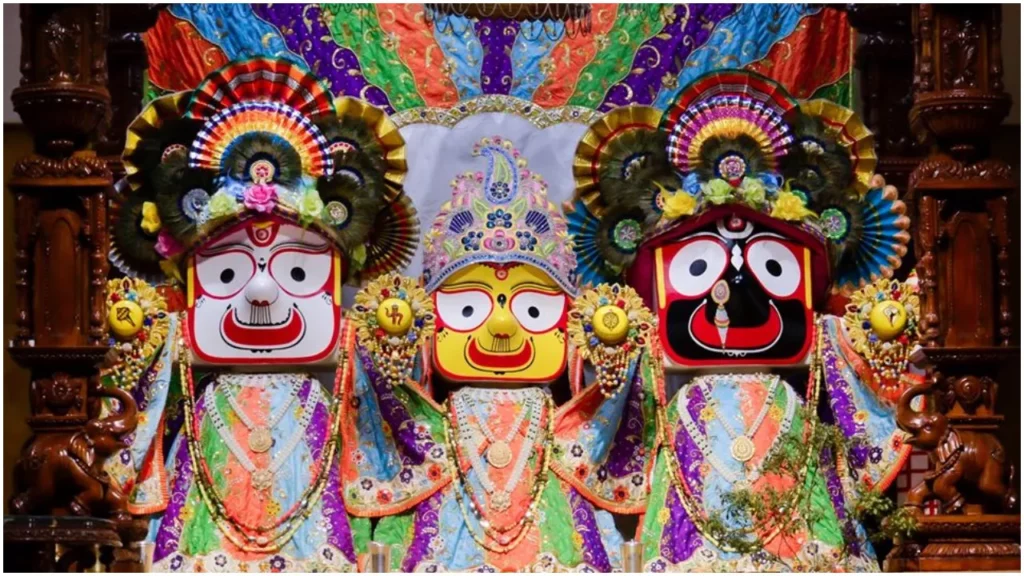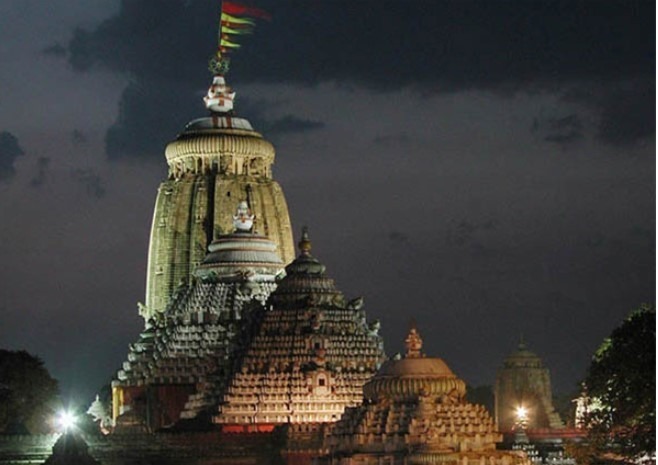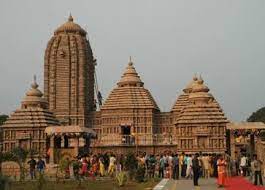
Jagannath Temple
Jagannath Temple, situated in the sacred city of Puri, Odisha, stands as a revered Hindu pilgrimage site and a testament to religious and cultural vibrancy. Dedicated to Lord Jagannath, a form of Lord Krishna, the temple is renowned for its annual Rath Yatra, a grand chariot procession attracting millions of devotees. Believed to have been built in the 12th century by King Anantavarman Chodaganga Deva, the temple’s architecture reflects the Kalinga style and houses the deities Lord Jagannath, his brother Balabhadra, and sister Subhadra. Beyond its spiritual significance, the temple is a hub of cultural traditions, hosting various rituals, festivals, and classical performances, making it a focal point of devotion, heritage, and vibrant spirituality in the heart of Puri.
Namaste 🙏 नमस्ते
Secure your visit • अपनी यात्रा सुरक्षित करें
Historical background and Architectural splendor
This Temple holds a rich historical legacy, dating back to the 12th century when it was commissioned by King Anantavarman Chodaganga Deva. The temple’s construction, completed in the 12th century, signifies not only a place of worship but a cultural and architectural marvel that has withstood the tests of time. Over the centuries, it has undergone renovations and enhancements, becoming a symbol of Odisha’s architectural prowess.
The temple’s architectural splendor follows the Kalinga style, characterized by a towering spire (shikhara) and intricate carvings that adorn its exterior. The main shrine, known as the ‘Deul,’ houses the deities Lord Jagannath, Balabhadra, and Subhadra. The structure stands as a majestic representation of Odishan temple architecture, with its pyramidal spire dominating the skyline. The temple complex includes various halls, pavilions, and beautifully sculpted pillars, showcasing the artistic finesse of ancient craftsmen.
The historical background and architectural grandeur of Jagannath Temple not only draw pilgrims seeking divine blessings but also captivate enthusiasts of art and history, making it a revered landmark that seamlessly intertwines spirituality with cultural and architectural brilliance.

Religious Significance
Jagannath Temple in Puri holds profound religious significance in Hinduism, particularly within the Vaishnavism tradition. Dedicated to Lord Jagannath, considered a form of Lord Krishna, the temple is a sacred pilgrimage site that attracts millions of devotees seeking divine blessings and spiritual solace. The temple's sanctity is deeply rooted in mythology and tradition, with legends surrounding the installation of the deities—Lord Jagannath, Balabhadra, and Subhadra. The annual Rath Yatra, or chariot festival, is a major highlight, symbolizing the journey of the deities from the temple to the Gundicha Temple. This grand procession draws devotees from far and wide, exemplifying the significance of Lord Jagannath in the hearts of the faithful. The temple complex is not merely a physical structure but a spiritual abode where rituals, prayers, and festivals are conducted with fervor. The unique aspect of the deities' wooden forms, changed in a specific ritual known as 'Nabakalebara,' further enhances the religious importance of Jagannath Temple. For devotees, a visit to Jagannath Temple is a sacred pilgrimage, offering an opportunity for spiritual elevation, devotion, and a connection with the divine presence of Lord Jagannath, making it a pivotal center of religious fervor and cultural heritage in the heart of Odisha.


Festival and Celebrations
Here the festivals celebrated are Rath Yatra, Snana Yatra, Nabakalebara, Chandan Yatra, Chandan Yatra, Niladri Bije and Suna Besha.
Surroundings area & attractions
- Chilika Lake: A short drive from Puri, Chilika Lake, Asia's largest brackish water lagoon, is a haven for birdwatchers and nature enthusiasts, renowned for its biodiversity.
- Konark Sun Temple: A UNESCO World Heritage Site, the Konark Sun Temple, known for its intricate architecture, is located about 35 kilometers from Puri, offering a fascinating historical excursion.
- Puri Beach: Apart from the religious significance, Puri Beach is a vibrant spot for leisure, water activities, and enjoying the coastal ambiance.
Notable Events and Incidents
- Rath Yatra:The annual Rath Yatra, or Chariot Festival, is one of the most famous events associated with the Jagannath Temple.
- Nabakalebara:The last Nabakalebara took place in 2015, a sacred ceremony associated with changing the wooden images of the deities in the temple.
Connectivity :
- By Air: The nearest airport is Bhubaneswar Airport (about 60 km from Puri), with regular flights from major Indian cities.
- By Rail: Puri Railway Station is well-connected with trains from Kolkata, Delhi, Mumbai, Chennai, and other major destinations.
- By Road: Puri is connected via national highways to Bhubaneswar, Cuttack, and other nearby cities, with frequent buses and taxis.
- Local Transport: Auto-rickshaws, taxis, and cycle-rickshaws make traveling within Puri and reaching the temple convenient for pilgrims and tourists."
"From Mangala Aarti to Rath Yatra, Namandarshan guides your journey to Jagannath Temple with peace and grace. Namandarshan leads you peacefully and gracefully to Jagannath Temple from Mangala Aarti to Rath Yatra."
FAQs
Shri Jagannath Temple is located in Puri, Odisha, around 60 km from Bhubaneswar.
It is one of the Char Dham pilgrimage sites and is dedicated to Lord Jagannath, along with Lord Balabhadra and Goddess Subhadra.
Yes, Puri Jagannath Temple is one of the four Char Dham sites along with Badrinath, Dwarka, and Rameswaram.
The temple was built in the 12th century by King Anantavarman Chodaganga Deva.
Only Hindus are allowed to enter the temple premises.
No. Non-Hindus can view the temple from outside the Meghanada Pacheri (outer wall).
Darshan generally starts around 5:00 AM and continues till late night, depending on rituals.
No, darshan is completely free.
Generally, darshan is common for all devotees. Special arrangements may exist during festivals.
It can take 30 minutes to several hours, depending on crowd and festival season.
No, mobile phones, smart watches, cameras, and electronic items are strictly prohibited.
No, photography and videography are not allowed inside the temple premises.
Yes, locker facilities are available near the temple entrance.
Devotees should wear modest and traditional clothing.
Mahaprasad is the sacred food offered to Lord Jagannath and is considered extremely holy.
Mahaprasad is available at Anand Bazaar, inside the temple complex.
It is cooked in earthen pots, without tasting, and is believed to never go impure.
Rath Yatra is the annual chariot festival where Lord Jagannath, Balabhadra, and Subhadra travel to Gundicha Temple.
The main temple remains closed for regular darshan, but devotees can have darshan at Gundicha Temple.
It is a ceremonial bathing festival of the deities before Rath Yatra.
Visitor information
Entry Fee: No fee
Timings :
5:30 AM – 7:30 AM (Mangal Arati / Besha)
9:15 AM – 1:00 PM (Gopal Ballava, Sakala Dhupa)
1:00 PM – 2:00 PM (Temple closed for rest)
Sandhya Aalati – 6:00 PM
Sandhya Dhupa & Chandan Laagi – 8:00 PM to 9:00 PM
Badasinghara Besha – 9:00 PM to 10:00 PM
Final rituals before closing
Heavy crowds expected during mid-day and festivals
Early morning (around 5:00 AM)
Late evening (after 8:00 PM)
Darshan is free
Pooja tickets available at temple counters
Darshan Days- All days
Address:
